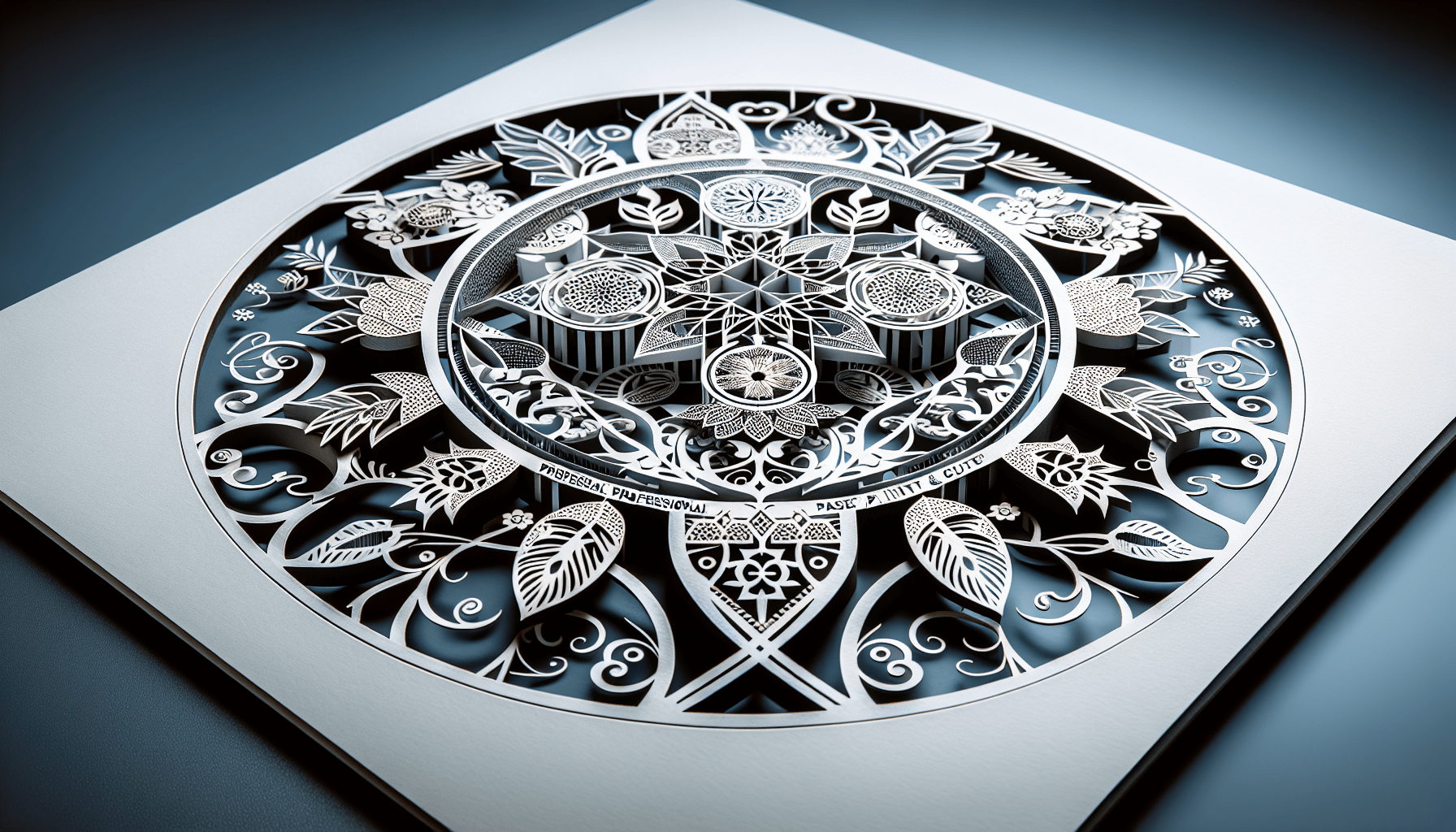ANYCUBIC 10K Resin 3D Printer, Photon Mono 4 LCD 3D Printer with 7-inch Mono Screen, Upgraded LighTurbo Matrix and Printing Platform, Printing Size of 6.04''x3.42''x6.49''
$159.99 (as of June 11, 2025 22:23 GMT +00:00 - More info)In the video titled “3D Printed Moulds To Make Carbon Fiber Epoxy Resin Tubes – How to Tutorial,” the content creator, Matu, explores the possibility of using 3D printed moulds to make carbon fiber parts. He demonstrates the process step by step, starting with the printing of the moulds using Power PLA from Additive Heroes. The moulds are then prepared by adding bolts and nuts and coating them with a mould release spraycan for better release. VAC Cast aluminium filled epoxy resin (TC80) from Easycomposites is used to cast the resin, and a silicone intensifier, created using a 3D printed mould, is used to cast the silicone in. Matu also explains the use of carbon fiber braided sleeve, EL2 epoxy laminating resin, and the importance of adding two layers of carbon fiber for better results.
Overall, this tutorial provides a comprehensive guide on how to make carbon fiber tubes using 3D printed moulds. Matu shares his expertise and techniques, while also showcasing the materials and tools used throughout the process. If you’re interested in exploring the world of carbon fiber parts and 3D printing, this tutorial is a must-watch.
Materials and Tools
To create carbon fiber epoxy resin tubes using 3D printed molds, you will need the following materials and tools:
Power PLA from Additive Heroes
Power PLA filament from Additive Heroes is used to print the molds. This filament has the characteristics of ABS, which is well-suited for this application. It is strong and durable, making it a suitable choice for creating the molds.
Bolts and nuts
Bolts and nuts are added to the molds to create threaded inserts. These inserts will be used later on to secure side plates onto the molds. The bolts are coated with a mold release spraycan to ensure easy removal, while the nuts are left uncoated to ensure a strong bond with the epoxy resin.
Mould release spraycan
A mold release spraycan is used to coat the bolts for easy removal from the molds. This spray helps prevent the bolts from sticking to the resin when it is poured into the molds.
VAC Cast aluminium filled epoxy resin (TC80) from Easycomposites
VAC Cast resin, now known as TC80, is an aluminum-filled epoxy resin from Easycomposites. It has low shrinkage, high temperature resistance, and can be poured in larger volumes. This resin is used to fill the molds and create the carbon fiber tubes.
Silicone intensifier
A silicone intensifier is created using a 3D printed mold. This intensifier will serve as the core for the carbon fiber tubes. It expands under heat, creating pressure and ensuring a good finish on the inside of the tubes. The silicone intensifier is made using platinum silicone, which is flexible and able to withstand higher temperatures.
Carbon fiber braided sleeve
A carbon fiber braided sleeve with a 40mm diameter is used to create the carbon fiber tubes. The sleeve is applied to the mold and the silicone intensifier to form the shape of the tubes. Carbon fiber is known for its strength and light weight, making it an ideal material for these tubes.
EL2 epoxy laminating resin with fast hardener
EL2 epoxy laminating resin is mixed with a fast hardener from Easy Composites. This resin is applied to the carbon fiber sleeve and the mold to ensure a good bond between the carbon fiber and the resin. It is important to mix the resin well before applying it to ensure a consistent result.
Oven
Once the molds are filled with resin, they are cured in an oven. The oven helps increase the temperature resistance of the molds and ensures a thorough cure of the resin.
Preparing the 3D Printed Moulds
Before casting the resin, the 3D printed molds need to be prepared. Here are the steps to prepare the molds:
Printing the molds with PLA filament
The molds are printed using Power PLA from Additive Heroes. The Creality Ender 3S1 printer is used for this purpose. Power PLA is chosen for its ABS-like properties, which make it suitable for creating sturdy molds.
Flattening the top side of the molds
To ensure a good fit between the mold halves, the top side of the molds is flattened. This is done by sanding the surface with sandpaper and a Perma Grits File. Flattening the molds helps create a seamless finish when the two halves are closed.
Applying spray release to the bolts
To facilitate the easy removal of the bolts from the molds, a mold release spraycan is applied to the bolts. This spray forms a thin layer between the bolts and the resin, preventing them from sticking together.
Securing the molds on a base plate with double-sided tape
To prevent the molds from warping or moving during the casting process, they are secured onto a base plate using double-sided tape. This ensures that the molds maintain their shape while the resin is poured and cured.

Casting the Resin
Once the molds are prepared, it’s time to fill them with the vacuum cast resin. Here’s how the resin casting process is carried out:
Filling the molds with vacuum cast resin
The VAC Cast aluminum-filled epoxy resin (TC80) is poured into the molds. Care is taken to ensure that the resin fills the entire mold cavity, leaving no gaps or air bubbles.
Curing the molds in the oven for temperature resistance
After filling the molds with resin, they are cured in an oven. This step helps increase the temperature resistance of the molds, making them more suitable for producing carbon fiber tubes. The curing time and temperature may vary depending on the specific resin used.
Creating the Silicon Intensifier
To create a silicon core for the carbon fiber tubes, a silicon intensifier is made using a 3D printed mold. Here’s how the silicon intensifier is created:
Printing the silicon intensifier
The silicon intensifier mold is 3D printed using the same PLA filament used for the molds. This mold is designed to have the desired shape and dimensions for the final silicon intensifier.
Filling the intensifiers with silicone
The 3D printed mold is filled with platinum silicone to create the silicon intensifiers. Platinum silicone is chosen for its flexibility and ability to withstand higher temperatures. The silicone is carefully mixed and poured into the mold to ensure a complete fill.
Adding TPU filaments as registration keys
To prevent epoxy resin leakage and ensure a tight seal, TPU filaments are added to the silicon intensifiers as registration keys. These filaments act as barriers, helping contain the resin within the mold and creating a controlled thickness for the carbon fiber tubes.

Making the Carbon Fiber Tubes
With the molds and silicon intensifiers prepared, it’s time to make the carbon fiber tubes. Here’s how the tubes are made:
Applying EL2 epoxy laminating resin to the carbon fiber sleeve and mold
EL2 epoxy laminating resin is mixed with a fast hardener and applied to the carbon fiber braided sleeve and the mold. The resin ensures a strong bond between the carbon fiber and the mold, creating a solid structure for the tubes. A brush is used to apply the resin evenly.
Closing the mold halves with carbon fiber sleeve and silicone intensifier
The carbon fiber braided sleeve and the silicone intensifier are placed between the mold halves. The mold halves are then closed tightly, creating pressure on the carbon fiber sleeve and ensuring a good surface finish on the tubes.
Creating pressure for good surface finish
To create additional pressure and stability, an aluminum rod is inserted into the mold. Vaseline is used as a lubricant to facilitate the insertion. The aluminum rod helps apply pressure to the silicone intensifier and ensures a consistent surface finish on the tubes.
Curing and Finishing
After the carbon fiber tubes are formed, they go through the curing and finishing process. Here’s how it is done:
Curing the molds in the oven for 6 hours
The molds, with the carbon fiber tubes inside, are cured in an oven for approximately 6 hours. The curing time may vary depending on the specific resin used. This extended curing time helps ensure a thorough cure and enhances the structural integrity of the tubes.
Removing and cooling down the molds
Once the curing process is complete, the molds are removed from the oven and allowed to cool down. This step allows the molds and the tubes to reach room temperature before further processing.
Addressing any imperfections
After cooling down, any imperfections in the carbon fiber tubes, such as pinholes or bubbles, are addressed. These imperfections are filled or repaired to ensure a smooth and flawless surface finish on the final tubes.
Adding two layers of carbon fiber to improve wall thickness and pressure
In some cases, when using one layer of carbon fiber, air pockets may appear, indicating insufficient pressure. To address this, two layers of carbon fiber are added to the tubes. This increased wall thickness improves pressure distribution and ensures better results.

Final Steps
Once the curing and finishing processes are complete, the final steps involve removing the finished carbon fiber tubes from the molds, cleaning them, and addressing any remaining imperfections. Here’s how the final steps are carried out:
Removing the finished tubes from the molds
The mold halves are released, and the carbon fiber tubes are carefully removed from the molds. The silicone intensifier is also removed, leaving behind the carbon fiber tubes with their desired shape and dimensions.
Cleaning the tubes
The carbon fiber tubes are cleaned to remove any residual materials or contaminants. This step helps ensure a clean and smooth surface finish on the tubes.
Addressing any imperfections
If any imperfections, such as pinholes or bubbles, are still present on the tubes, they are addressed at this stage. These imperfections are filled or repaired using suitable materials to achieve a flawless final result.
Adding two layers of braided sleeves to improve the finish
To further enhance the surface finish of the carbon fiber tubes, two layers of braided sleeves are added. These layers provide additional reinforcement and improve the appearance and texture of the tubes.
Conclusion
In conclusion, using 3D printed molds to make carbon fiber epoxy resin tubes is a viable and effective process. With the right materials and tools, such as Power PLA from Additive Heroes, VAC Cast resin from Easycomposites, and carbon fiber braided sleeves, it is possible to create high-quality carbon fiber tubes with excellent strength-to-weight ratios.
The tutorial video by Matu provides a comprehensive guide on the entire process, from preparing the molds to curing and finishing the tubes. Matu’s social media handles, including Facebook (mat2composites), Instagram (matthieulibeert), and Twitter (@matthieutje65), can be followed for more content related to carbon fiber and composites.
In addition, Matu also teases a future tutorial on fixing carbon fiber parts, which promises to be another valuable resource for enthusiasts and professionals working with carbon fiber. Overall, this tutorial provides valuable insights and practical tips for anyone interested in creating carbon fiber tubes using 3D printed molds.
Is it possible to use 3D printed moulds to make Carbon Fiber parts? In this video, you will learn how to make 3D printed moulds using Power PLA from additive heroes, which will enable you to create Carbon Fiber tubes.
To create the moulds, you will need a Creality Ender 3S1 printer. Power PLA is recommended for this project as it has similar characteristics to ABS, which is ideal for making the moulds. Alternatively, PETG can also be used. However, it was not available during the making of this video.
Once the moulds are printed, you will need to add bolts and nuts to create threaded inserts that can be used later on. It is important to coat the bolts with a spraycan mould release to ensure they can be easily removed. However, the nuts should not be coated, as they need to bond well with the TC80 epoxy that will be poured later.
In this tutorial, VAC Cast aluminium filled epoxy resin from @Easycomposites is used. This epoxy resin, now known as TC80, has several advantages, such as low shrink, higher temperature resistance (TG), and the ability to be poured in larger volumes. For this project, 1.2 Kg of resin is used for the two mould halves. Please note that this resin has a higher density than water, so you will need to add more resin when calculating the volume.
After casting the resin, it should be left to cure for over 24 hours before undergoing a postcure process in the oven. Gradually increase the temperature until the desired temperatures are reached.
To make the silicone intensifier, use platinum silicone and a 3D printed mould. For best results, use spiralize/vase/vaze mode in Cura to achieve a continuous print without seams. The intensifier will expand under heat, creating pressure and leaving a smooth finish on the inside of your part. An aluminium rod is added to facilitate the removal of the silicone mandrel after the epoxy carbon fiber braided sleeve has cured.
To make the tubes, a carbon fiber braided sleeve with an average diameter of 40mm is used. Fold the edges on the inside for a clean finish, or you can cut the carbon fiber strands. Mix EL2 (Epoxy laminating resin) with the fast hardener from Easy Composites. Ensure thorough mixing. Apply a small amount of this mixture to the carbon fiber sleeve and the pre-coated mould using a brush. The mould should be coated with a chemical release agent for easy demoulding after curing.
Close the two 3D printed moulds with the carbon fiber braided sleeve and silicone mandrel/intensifier inside. This will create pressure and result in a smooth surface finish. Insert the aluminium rod using Vaseline as a lubricant, which will provide additional pressure and stability to the silicone mandrel.
After curing in the oven for 6 hours, remove the 3D printed moulds and let them cool down. Release the mould halves and remove the silicone mandrel, leaving behind a beautiful carbon fiber tube. If air pockets appear when using just one layer, you can increase the diameter of the silicone mandrel/intensifier or add more layers for increased pressure. In this case, adding 2 layers proved to be a better solution, resulting in improved results.
In the next tutorial, you will learn more about finishing a carbon fiber part with defects.
For more information and links to the materials used in this tutorial, visit the following links:
You can also find me on Facebook at /mat2composites, Instagram as matthieulibeert, and Twitter as @matthieutje65. For any inquiries, visit my website/mail at www.mat2composites.com.











